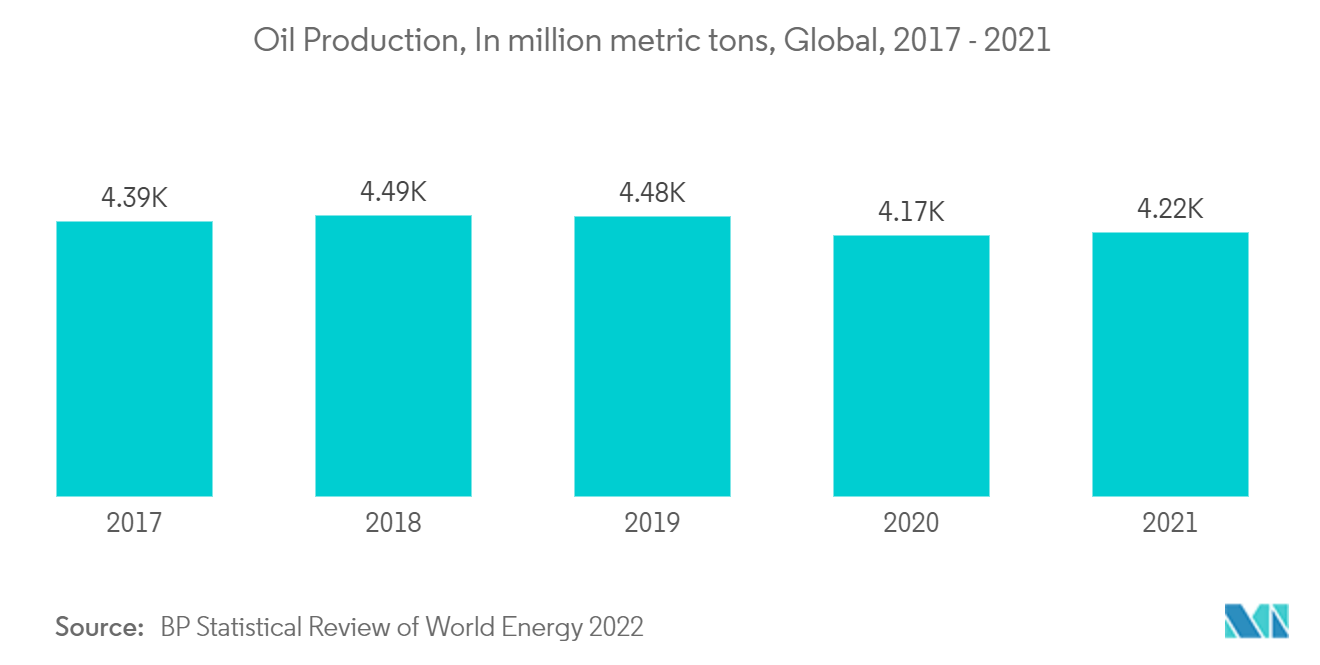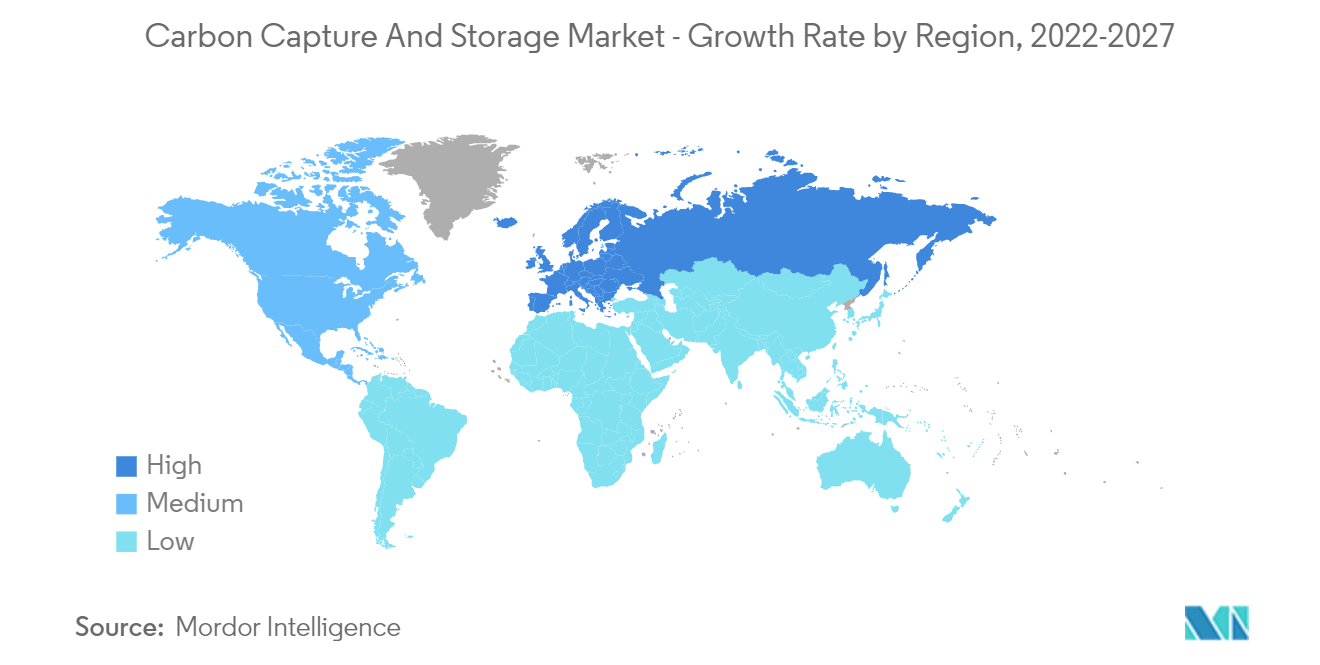Market Trends of Carbon Capture and Storage Industry
This section covers the major market trends shaping the Carbon Capture & Storage Market according to our research experts:
Oil and Gas Segment to Dominate the Market
- Carbon dioxide stored in deep, onshore, or offshore geological formations uses CCS technologies for enhanced oil recovery that have been developed in the oil and gas industry.
- Carbon dioxide is extensively used in the oil industry for enhanced oil recovery (EOR) from mature oilfields. When carbon dioxide is inserted into an oilfield, it can mix with the crude oil, triggering it to swell and drop its viscosity, helping to maintain or raise the pressure in the reservoir. The combination of these processes permits more crude oil to flow to the production wells.
- In other circumstances, the carbon dioxide is not soluble in the oil. Here, the injection of carbon dioxide raises the pressure in the reservoir, helping to sweep the oil toward the production well.
- For more than three decades in Texas (United States), carbon dioxide has been used in enhanced oil recovery projects. EOR constitutes over 20% of total oil production, and some fields achieve recoveries of nearly 70%.
- Moreover as part of sustainable development, the oil and gas industry is moving toward carbon capturing and storage technologies.
- The Covid-19 pandemic servely affected oil and gas production. Moreover, The International Energy Agency estimates that the oil and gas demand is still reeling from the effects of the pandemic, and is unlikely to catch up with its pre-Covid trajectory. In 2020, oil demand was nearly 9 million barrels per day below the level seen in 2019, and it is not expected to return to that level before 2023. Thus, slow growth in oil & gas application can be witnessed.
- However as per the BP Statistical Review of World Energy 2022, the global oil production in the year 2021 observed an increase of around 1.21% as compared to the year 2020 and amounted 4,221.40 million metric tons which is further expected to increase in 2022 and 2023. Further, as per market experts the oil production is expected to see a significant boost over the forecast period and to grow as per pre-pandemic growth trends.

North America is Likely to Dominate the Market
- The North American region dominates the global market. The growing demand for clean technology, accompanied by the growing use of CO2 in EOR practices, is likely to drive the CCS market in countries like the United States and Canada.
- Chemical production, hydrogen production, fertilizer production, natural gas processing, and power generation are among the industries in the United States where CO2 is captured and injected. These facilities capture and inject CO2 to store it underground in geologic formations or to use it to boost oil production from aging oil fields, a process known as enhanced oil recovery (EOR).
- Since at least 1997, the US Department of Energy's Fossil Energy and Carbon Management Research, Development, Demonstration, and Deployment program (FECM) has financed research and development (R&D) in components of CCS.
- The government has funded USD 7.3 billion for DOE CCS-related programs since FY2010, including annual increases in recent years. The country allocated USD 750 million to FECM in FY2021, with USD 228.3 million going to CCUS.
- Under the Infrastructure Investments and Jobs Act (IIJA), the United State's government allocated USD 12.1 billion for carbon management technologies of which USD 2.54 billion is appropriated for carbon capture and storage (CCS) demonstration projects from 2022 to 2025.
- Moreover, In December 2020, the Canadian government proposed regulations for the Clean Fuel Standard. Projects that employ CCS to minimize the lifecycle carbon intensity of fossil fuels are one of the approaches to earn compliance credits for the Clean Fuel Standard. In addition, Canada's Budget 2021 suggested an investment tax credit for capital spent in CCUS projects, with a target of lowering CO2 emissions by at least 15 Mtpa, which would take effect in 2022.

